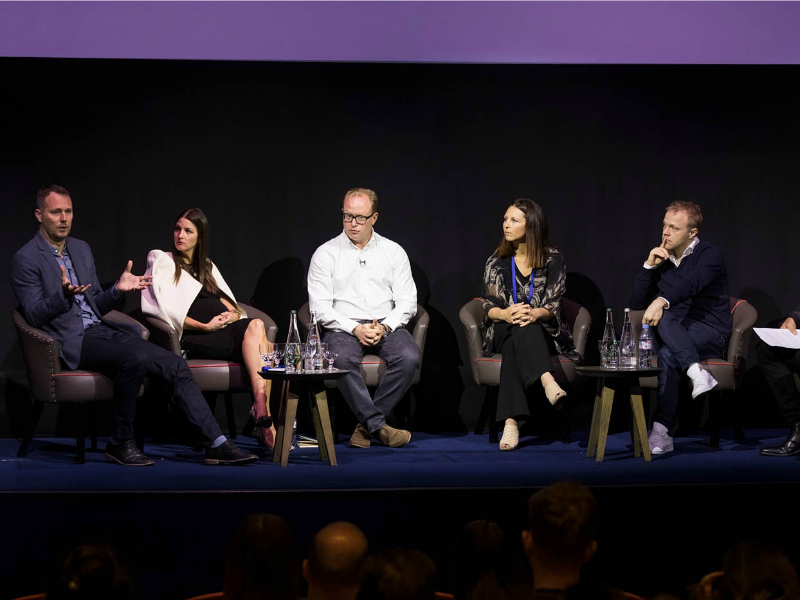Weber Shandwick 07 Jun 2017 // 4:37PM GMT

Ferris Bueller once said: “Things move pretty fast. If you don’t stop and look around once in a while, you could miss it”. Thirty-one years later, things are moving quite a bit faster round here.
The world is changing at alarming velocity, but there’s good reason to take pause and look at where the communications industry is heading. We’d argue that PR has never been in a stronger position and is poised to be an even more influential partner for brands and organisations.
The digital and social media revolution has led to a growing appreciation of the value of reputation and engagement, and rising concern over declining trust in business and institutions. To be a successful CMO now, you need to understand every aspect of PR a lot more than even five years ago, from employee relations to consumer engagement, from crisis management to social responsibility.
But comms is still a fraction of global marketing spend. Campaigns are still focused on awareness, however you measure it. If PR is to be a true, sustainable partner to CMOs it has to pay close attention to businesses’ need to evolve and transform.
Weber Shandwick’s panel session at The Holmes Report’s EMEA In2 Innovation Summit in London on 23 May took a deep dive into the growing influence of PR as brands tackle the business challenges of the future.
Not least of these is the content-to-commerce revolution: we’re at the tipping point of social media engagement, where consumers shift from liking and sharing content, to actually buying stuff from brands, direct from that content.
Introducing the panel, Weber Shandwick UK & EMEA CEO Colin Byrne said: “It’s the most exciting time ever for our industry. We’ve surfed the wave of social media, burst the banks of the media relations silo and attracted talent from media, advertising and TV. We’ve had a fast journey in terms of our rising influence over the past 10 years.
“We’ve grown in creativity and self-confidence. But we’re still focused on awareness, likes and shares, and if we are to deliver to the new breed of CCMO super-clients – those who have responsibility for communications, marketing and advertising and want full integration – we have to start demonstrating ROI in terms of real sales.”
Ben Wood, Director of Agencies, EMEA at Facebook, agreed that the time is ripe for content that collapses the space between engagement and transaction, from dynamic advertising that understands consumer intent to allowing consumers to interact with products.
He said: “It’s an unbelievable creative opportunity to escape from ‘social jail’ – our unhealthy focus on likes and shares and how long something has been watched for – and focus on the real transactional data that lets us see how we are helping clients build their brands. It’s about telling stories, engaging consumers and driving them to transaction. The opportunity for PR is to take more ground in creative execution and amplification, all built on consumer insight and what drives motivation and engagement.”
Marcus Dyer, MD of Weber Shandwick’s mobile and digital specialists Flipside, said: “We see likes and engagements as scaffolding – the means rather than the end – and we’re increasingly looking at the transaction piece. Before we’ve played in the space where we make people aware of products and feel good, but now we’re smashing that content side together with commerce. Our job is to reshape content to tighten that link with sales”.
For Dyer, the job of comms now is to reshape content so it tightens the link with sales. For instance, putting high quality video on platforms with touch ID so you can learn about products and buy straight away without going to the website or getting your credit card out.
The nature of what that Holy Grail content should look like is up for discussion, but third party influencers are key, especially for younger consumers, who want to hear from content creators as they see them as more believable, authentic, credible and expert than journalists.
PR’s traditional strengths in messaging and storytelling underlines why the industry is in a strong position to hold brands’ hands through the content-to-commerce shift. As Johan Seidefors, Marketing Director at leading Swedish media group, Bonnier Broadcasting (soon to be joining the Spotify team) said: “It pretty much all comes down to communications in the end. It all starts with the consumer you want to communicate with, and PR has always been the best at understanding that relationship.”
He had one caveat, however: there’s still too much emphasis on one-off, short-term creative campaigns: “As sales become a shorter distance from the message, it’s about building more long-term communications platforms, and knowing what you want to accomplish in a business sense, rather than individual campaigns.”
So what does PR need to do to move from brand awareness to brand transformation? Charlotte Witte, Senior Director, Weber Shandwick Prime believes that as industry after industry is being disrupted, with huge pressure on brands to stay ahead, it’s about understanding the changing role of the new breed of CMO.
She said: “They are much more focused on the new business stream and growth agenda: in effect, they are turning into Chief Growth Officers. For us, it’s about tapping into that agenda and hacking our communications toolbox to help them solve business problems. They are looking for a new type of lead agency, with broad competence, that understands society, business and the media”.
With the pace of change in business, fuelled by technological innovation, increasing exponentially, there may not be much time to stop and look around. But taking stock of our next move as an industry is key, if PR is to keep growing in influence and get its hands on a greater share of brand marketing budgets.


































.jpg)












